Weston Langford Railway Photography
Documenting railways and related infrastructure since 1960
Documenting railways and related infrastructure since 1960
Orphans
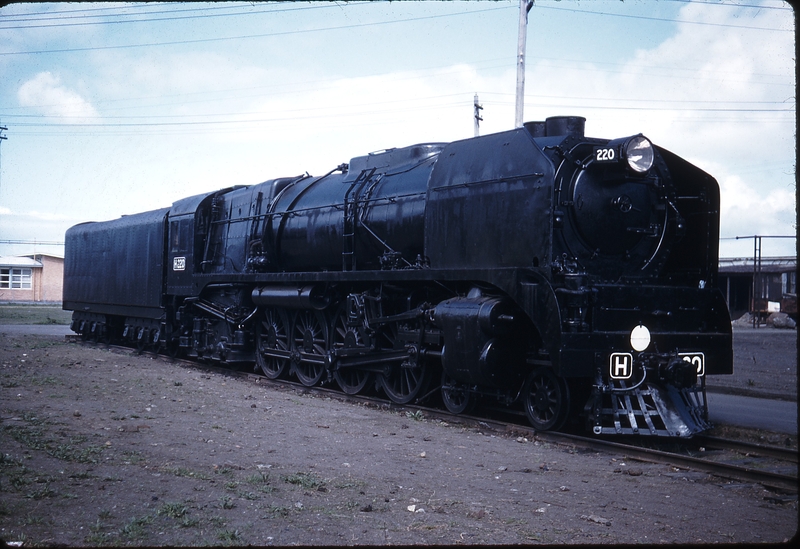
100086: Newport Workshops Preserved H 220 Heavy Harry
Date Taken: 1 September 1960. Country: Australia. State/Region: Victoria.
Victorian Railways' H Class locomotive No 220 Heavy Harry was intended to be the first of three to work passenger trains on the main Western Line. The project also embraced the upgrading of the infrastructure to support these much heavier locomotives. Largely due to the impact of World War II the second and third locomotives were never completed and the infrastructure upgrade did not take place. As a consequence Heavy Harry spent its working life hauling Goods trains between Melbourne an Albury.
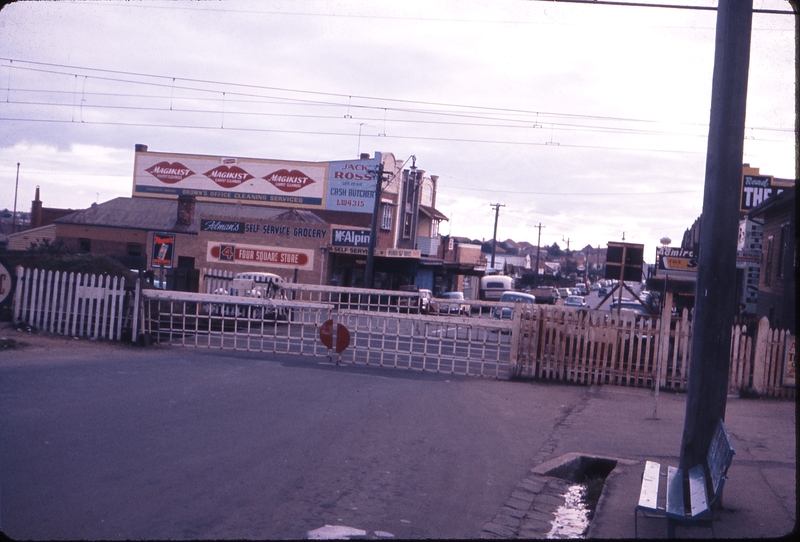
100564: McKinnon Manual Boom Barriers
Date Taken: 25 May 1961. Country: Australia. State/Region: Victoria.
The mechanical interlocked boom barriers at McKinnon Road near McKinnon Station were installed in 1928 and replaced by modern boom barrier in 1974. This was the only such installation in Victoria although similar mechanical gates occured elsewhere on the Australian railways.
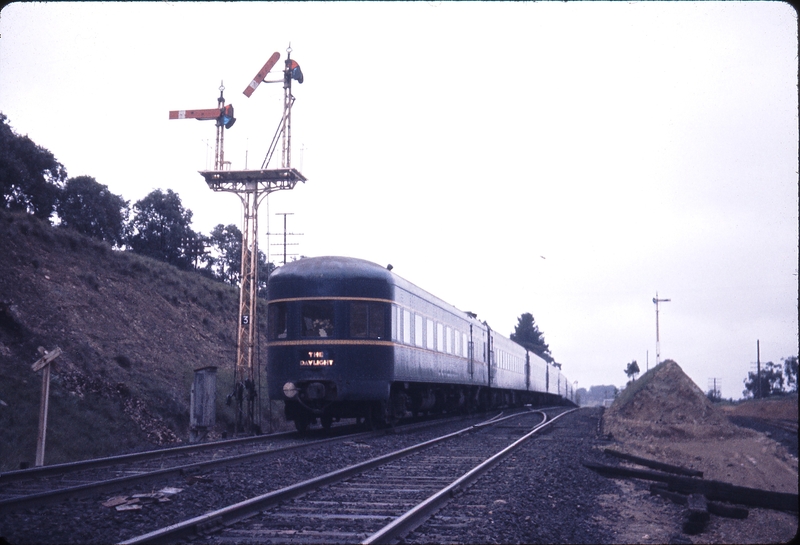
100651: Heathcote Junction Down Daylight Express
Date Taken: 16 September 1961. Country: Australia. State/Region: Victoria.
The Broad gauge Daylight Express "Club Car" originally the "Parlour Car" on Victorian Railways' celebrated Spirit of Progress was Victoria's only round ended observation car. After withdawal from regular service it was converted to an Officers' Inspection Car and renamed Norman.
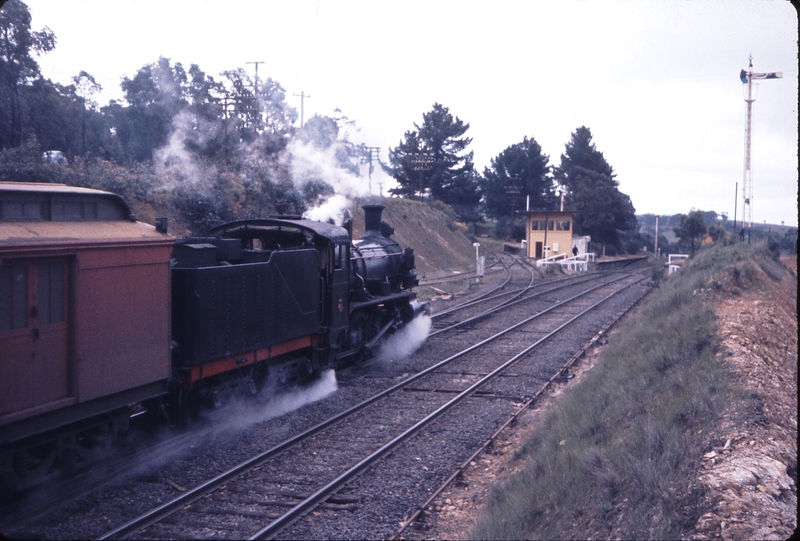
100654: Heathcote Junction Down ARHS VSRCA Special D3 639
Date Taken: 16 September 1961. Country: Australia. State/Region: Victoria.
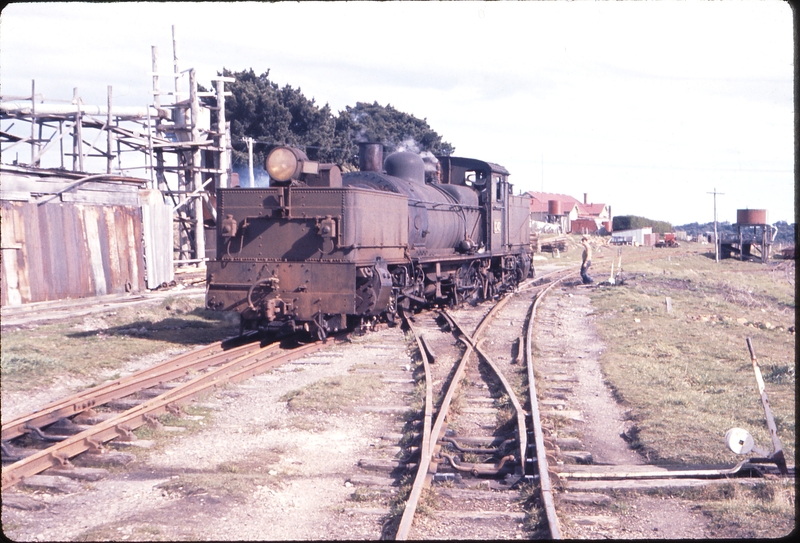
100682: Beech Forest G 42
Date Taken: 9 August 1961. Country: Australia. State/Region: Victoria.
Delta Crossovers occured at a number of locations on the Victorian Railways broad gauge. The only example on VR's narrow gauge was at Beech Forest.
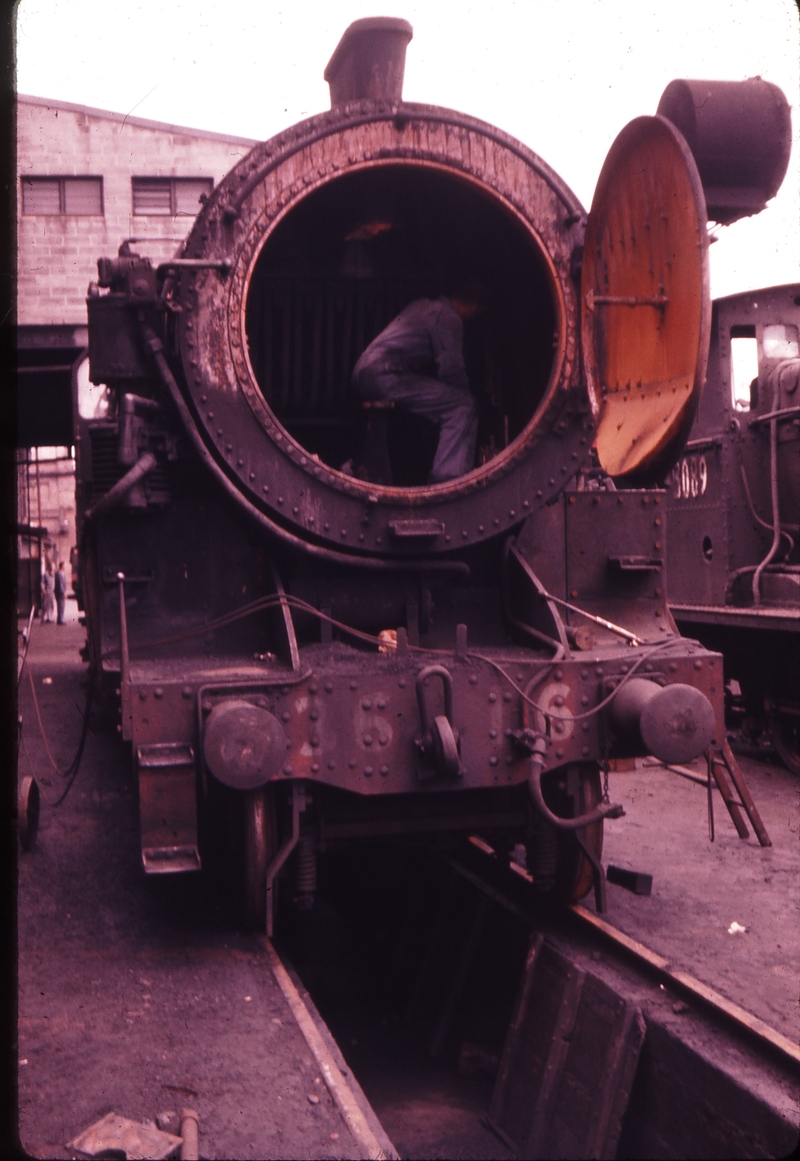
101009: Eveleigh 3616
Date Taken: 8 January 1962. Country: Australia. State/Region: New South Wales.
The Giesl Oblong Ejector was a device designed to enhance the efficiency of steam locomotives. It was widely used overseas but only one Australian lococotive was fitted being NSWGR 3616.
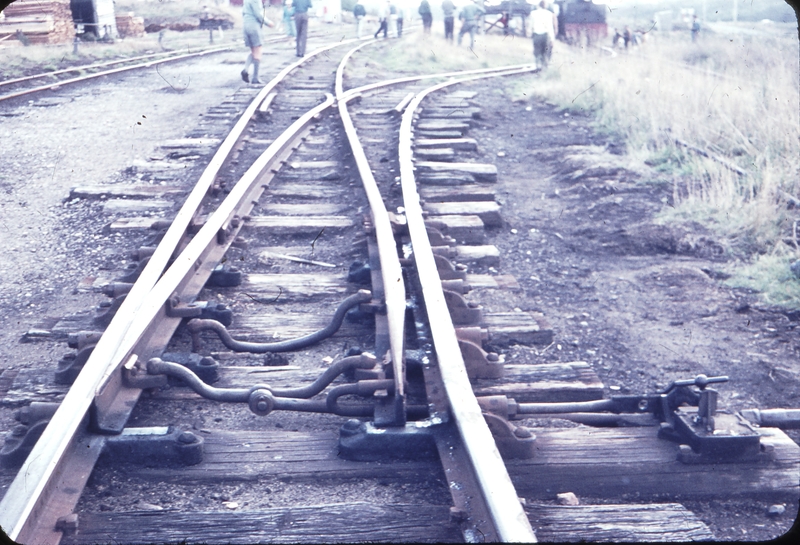
101436: Beech Forest Annett locked points leading to engine road
Date Taken: 31 March 1962. Country: Australia. State/Region: Victoria.
Annett Locks were commonly used on Victorian Railways broad gauge lines. In the pre preservation age there was only one Annett Lock on a narrow gauge line being the one illustrated on the Engine Siding at Beech Forest.
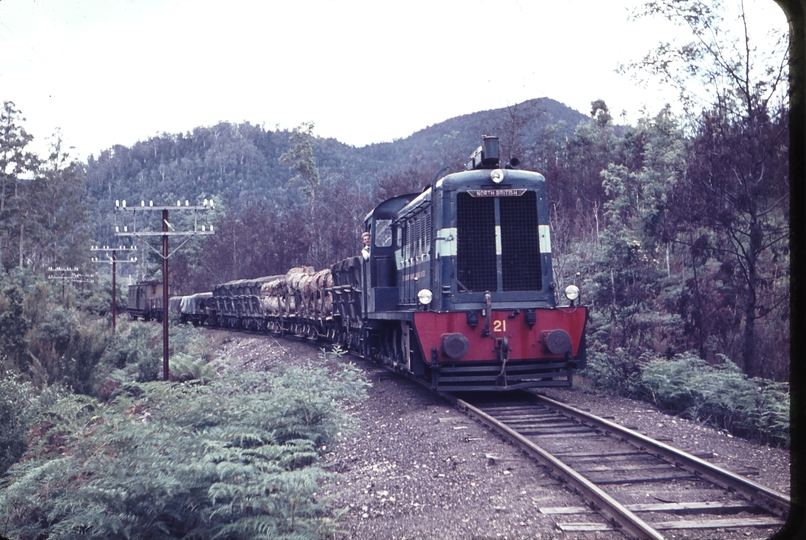
102570: Mile 66.5 Down Ore 21
Date Taken: 1 February 1963. Country: Australia. State/Region: Tasmania.
Paxman Voith Hydraulic Locomotive, later Emu Bay No 21 was constructed by the North British Locomotive Company. It was not altogether successful and was not repeated.
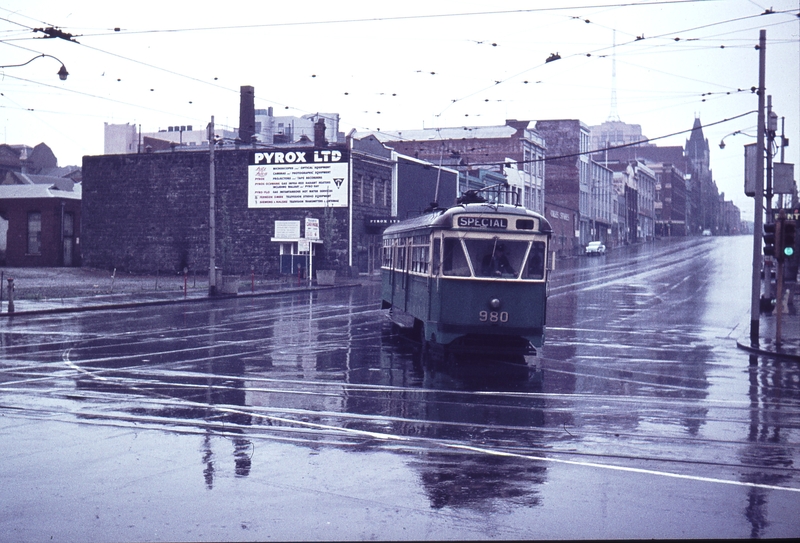
103222: Latrobe Street at Elizabeth Street Up ARHS Special PCC 980
Date Taken: 29 September 1963. Country: Australia. State/Region: Victoria.
The PCC (President's Car Company), equipment for MMTB Tram No 980 was imported from the US in 1949 and fitted to a locally built tramcar body. It was experimental in nature and not repeated.
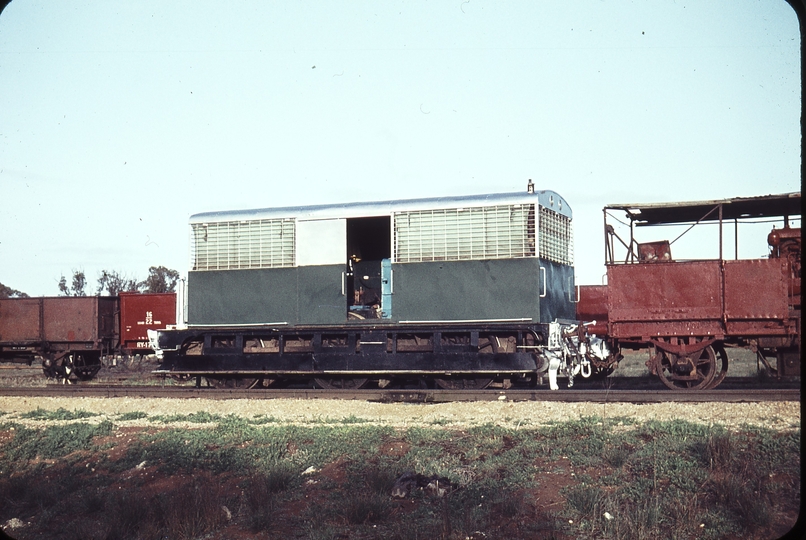
104879: Nowingi Y 413
Date Taken: 1 August 1964. Country: Australia. State/Region: Victoria.
The frame and wheels of steam locomotive Y 109 (originally Y 413), were used in the construction of a diesel locomotive to work on the Millewa South Railway at Nowingi. It commenced operation in 1955 and ceased running upon closure of the line in the mid 1980's.
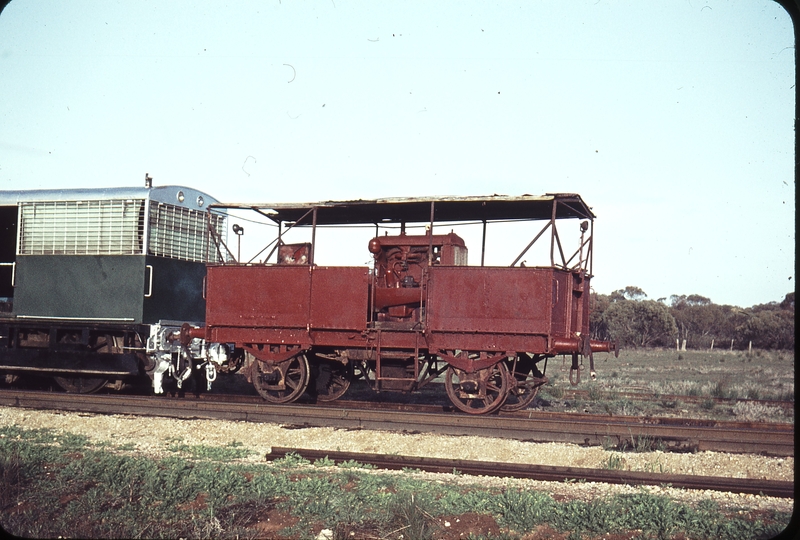
104880: Nowingi Locomotive on IB wagon frame Cleis
Date Taken: 1 August 1964. Country: Australia. State/Region: Victoria.
Cleis was the first locomotive to operate on the truncated Millewa South Railway. It was owned by Brunswick Plaster Mills who were extracting Gypsum from deposits at a number of locations along the Railway. It was the Line's sole motive power from the commencement of movement of Gypsum on the Line in May 1942 until the second locomotive arrived in 1955.
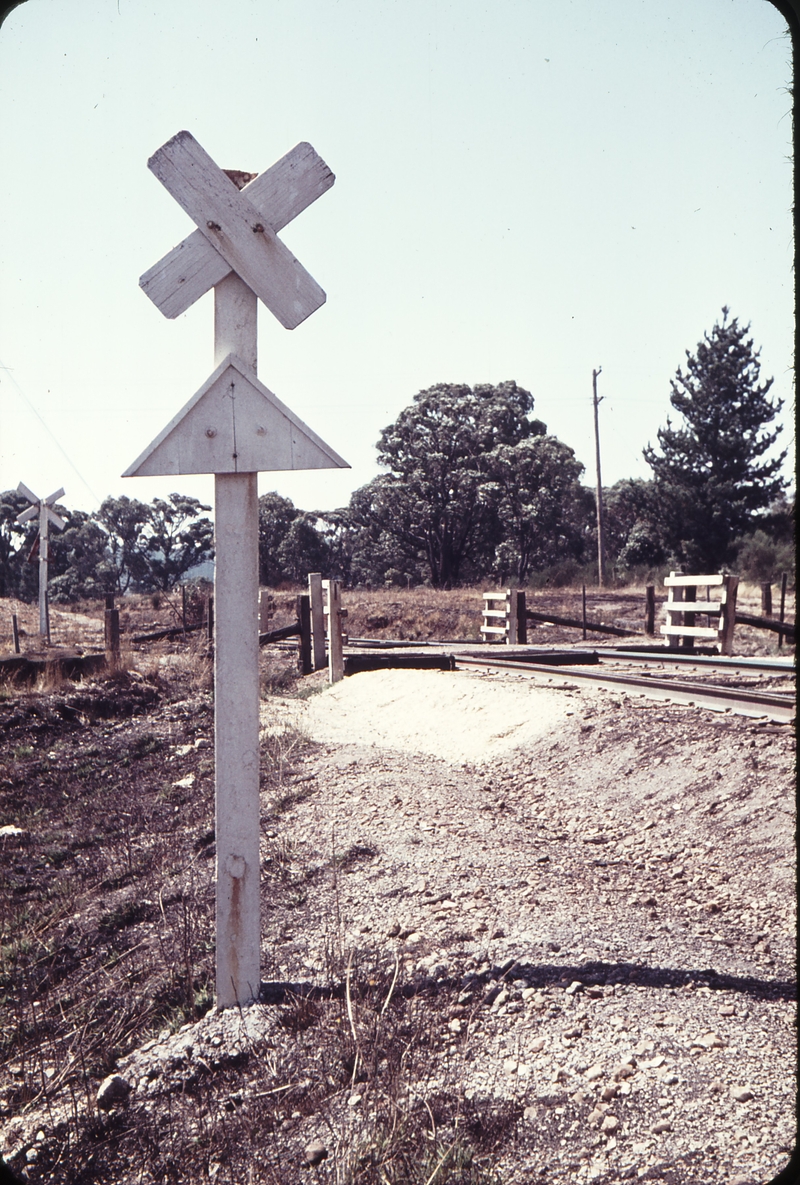
105838: Creswick Up side
Date Taken: 17 March 1965. Country: Australia. State/Region: Victoria.
The whistle board with a triangle added was not unique on the Victorian Railways. This one near Creswick was the only one that Weston encountered. The triangle indicated that there were gates at the level crossing in question.
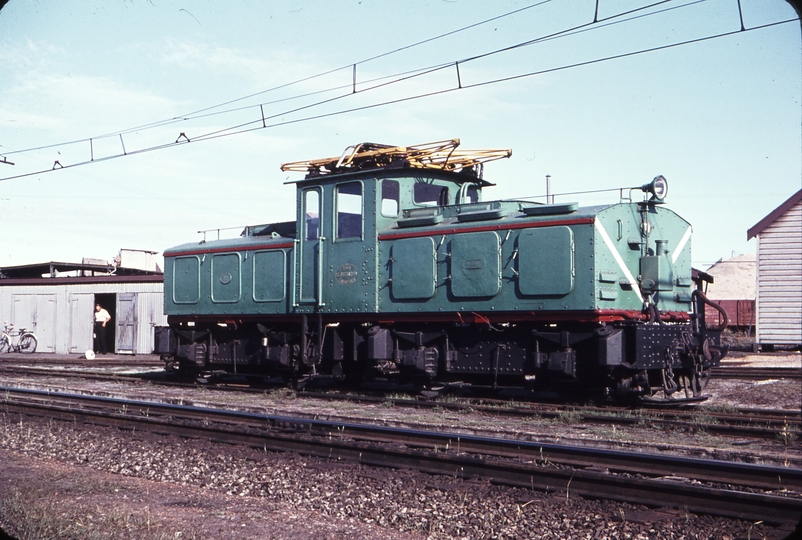
106595: East Perth SECWA No 1
Date Taken: 1 December 1965. Country: Australia. State/Region: Western Australia.
Between 1924 and 1969 Western Australia's only electric locomotive, built in England by Metropolitan Vickers, hauled coal wagons between East Perth Yard and East Perth Power Station along a short length of overhead catenary equipped track electrified at 600 V DC.
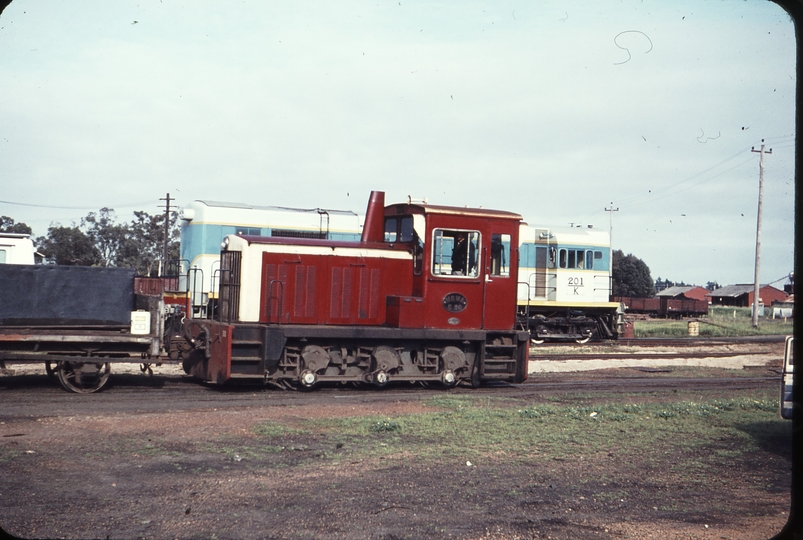
107849: Midland Workshops Shunter E 30 and K 201 behind
Date Taken: 28 September 1966. Country: Australia. State/Region: Western Australia.
The Midland Railway of Western Australia's first diesel locomotive was a 250 HP Comeng shunting locomotive and it was the only example of its class. In 1964 along with all of the MRWA's assets it passed to the WAGR and, at the end of its working life, was preserved by Rail Heritage WA at its Bassendean Museum.
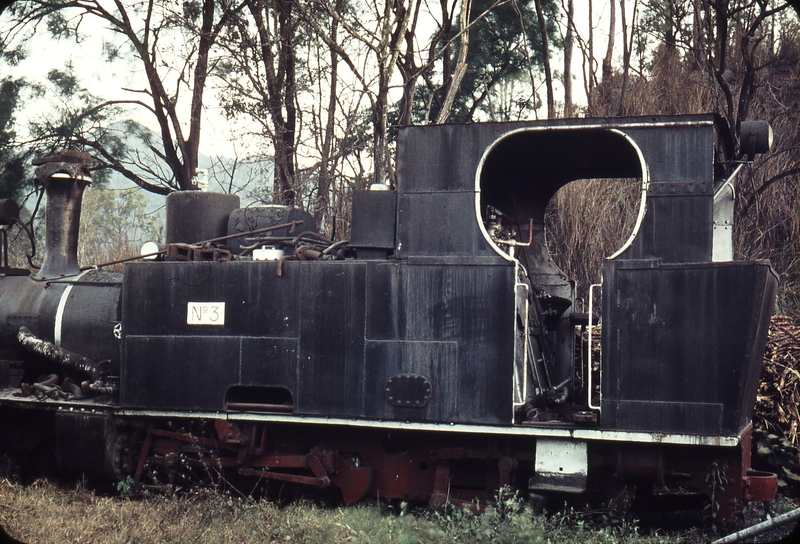
108210: Finch Hatton Cattle Creek Mill No 3 Borsig 4-4-2T ex Irvinebank
Date Taken: 2 November 1966. Country: Australia. State/Region: Queensland.
Cattle Creek Mill's Borsig Locomotive was the only one of its unusual wheel arrangement (4-4-2T), to run on the Queensland Canefields. Originally a tender locomotive it was converted to a tank locmotive shortly after it passed into the hands of Cattle Creek Mill near Finch Hatton. It is now located at the Australian Narrow Gauge Museum Society's site at Woodford near Brisbane.
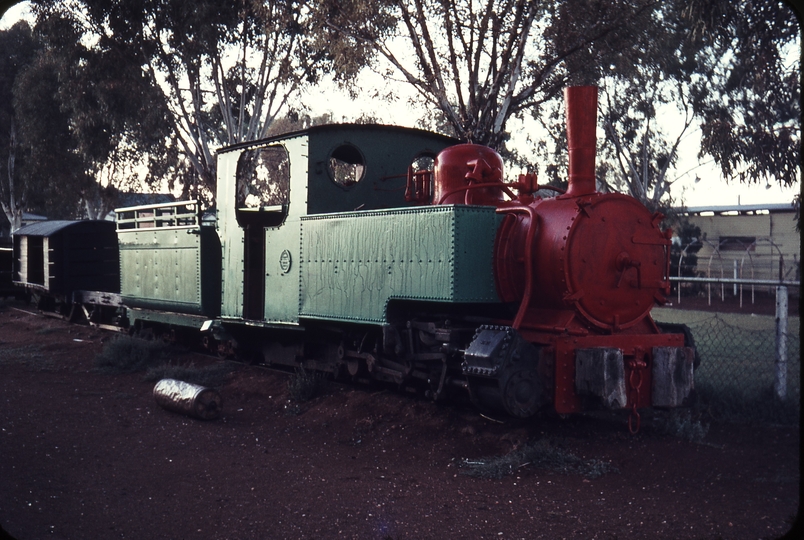
108823: Leonora Sons of Gwalia 1 8 gauge 0-6-2T+T Midland-1934
Date Taken: 28 July 1967. Country: Australia. State/Region: Western Australia.
The Sons of Gwalia 0-6-2T locomotive, sometimes referred to as "Ken" ran on the unusual gauge of 1' 8" (508 mm),. It was the only locomotive of this gauge to be manufactured at WAGR's Midland Workshops. It is now on display at Leonora.
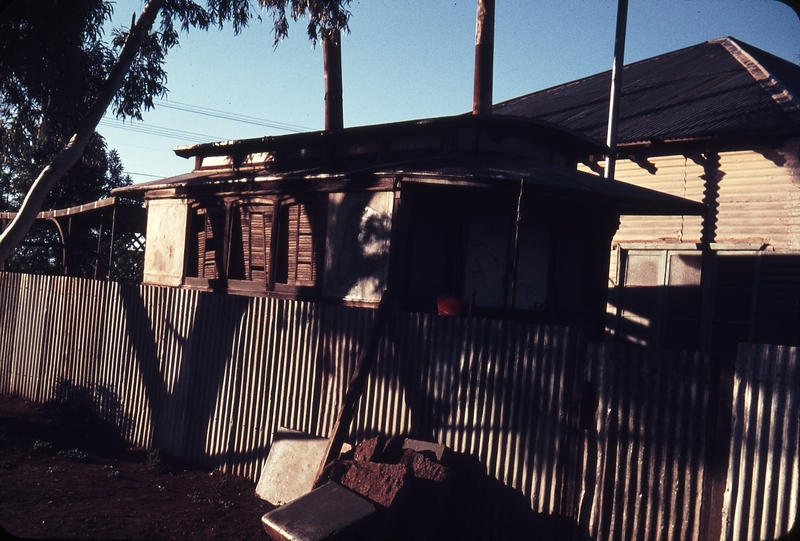
108824: Leonora Body of Leonora Tramway Car No 1
Date Taken: 28 July 1967. Country: Australia. State/Region: Western Australia.
The Leonora electric tramway which operated from 1908 to 1921 was Australia's most remote and its fleet consisted of a single tramcar. It was the only system to use double wire overhead.
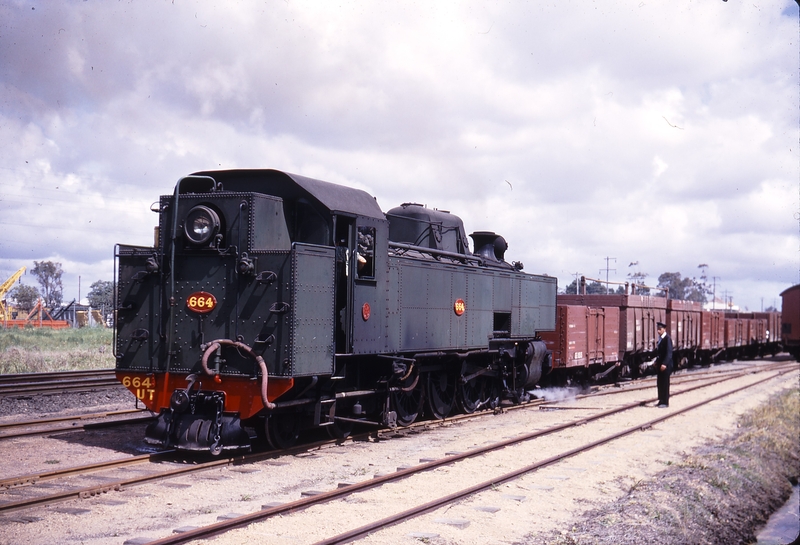
108874: Ashfield Opposite Cresco Shunter UT 664
Date Taken: 21 September 1967. Country: Australia. State/Region: Western Australia.
In 1946 WAGR purchased 14 locomotives built for war service. These were Pacifics of very similar design to the Sudan Railways 220 class. In Western Australia they were equipped for oil burning. One of these, the last, was, in 1957, converted to a 4-6-4T intended for suburban passenger working but saw only limited service.
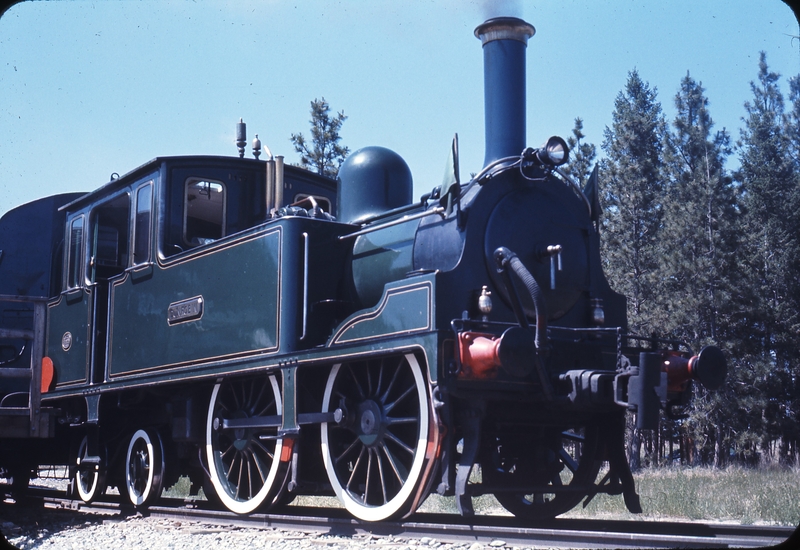
110482: Fort Steele BC Passenger Dunrobin
Date Taken: 20 June 1970. Country: Canada. State/Region: British Columbia.
0-4-4T Locomotive Dunrobin was manufactured by Sharp Stewart in 1895 for the Duke of Sutherland to run on his private line at Dunrobin Castle in Scotland where it ran until 1920. Between 1965 and 2005 it ran in Canada on a circuit of track at the Fort Steele Historic Park, British Columbia. It has been repatriated to the UK and is under restoration at the Beamish Museum near Newcastle Upon Tyne.
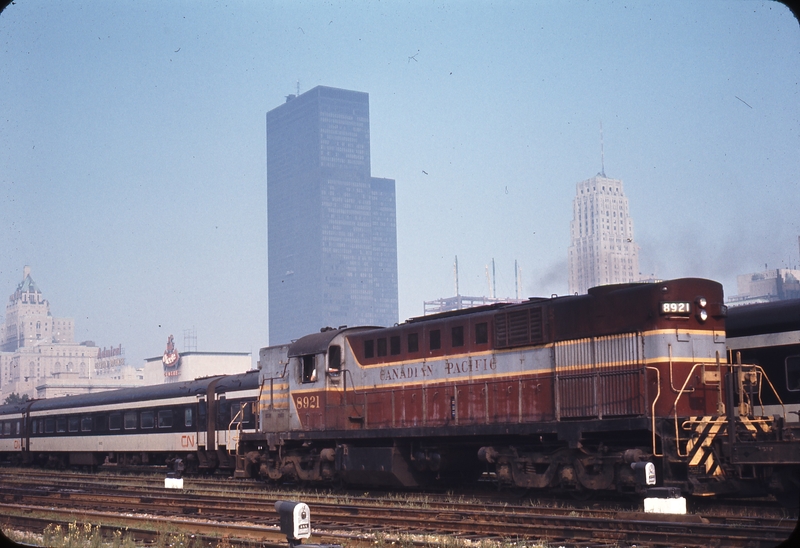
110565: Toronto Union Station Westbound CP Freight 8921
Date Taken: 13 August 1970. Country: Canada. State/Region: Ontario.
Montreal Locomotive Works demonstrator, later CP 8921, was tried out on a number of railways before being sold to Canadian Pacific. In 1997 it became part of the collection of the Elgin County Railway Museum, St Thomas Ontario.
This gallery displays railway and tramway items which were unique. Many were prototypes for proposals some of which which did not proceed. Others, in small scale operations, were sufficient for their purpose with additional examples simply not being needed. In many cases unique items were short lived by virtue of the disproportionate need for spare parts. The photos in this gallery are in approximately sequential order.